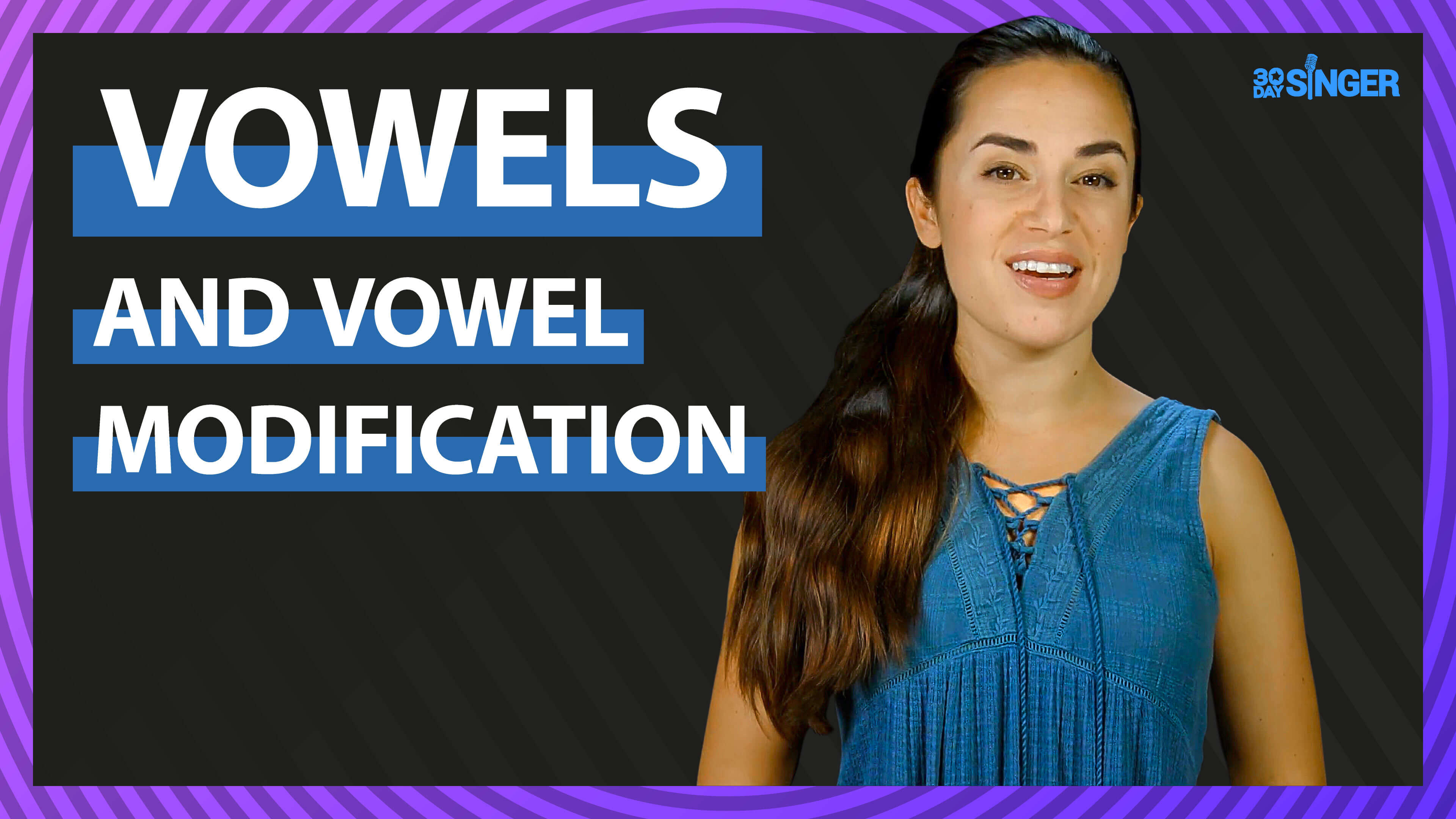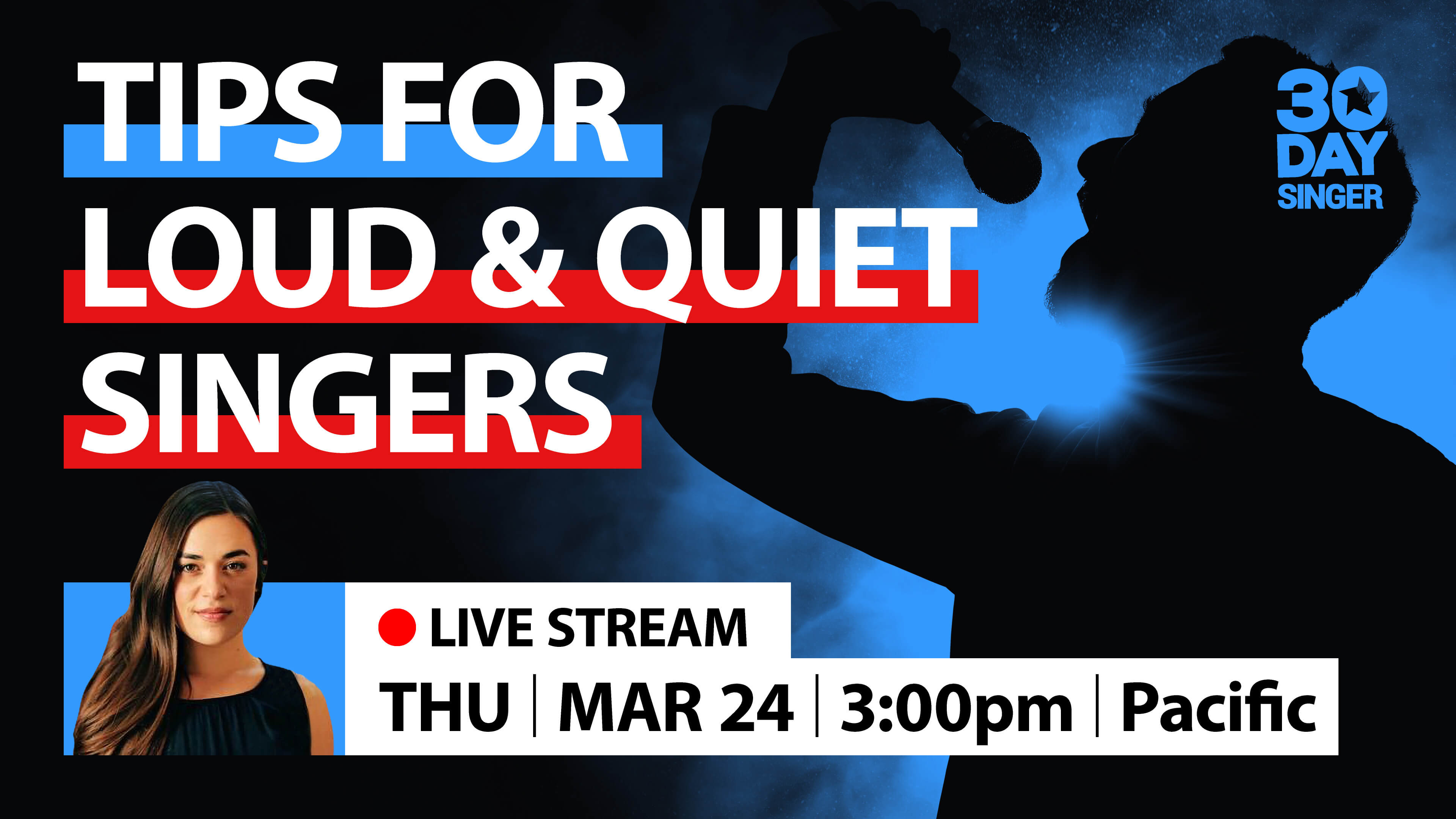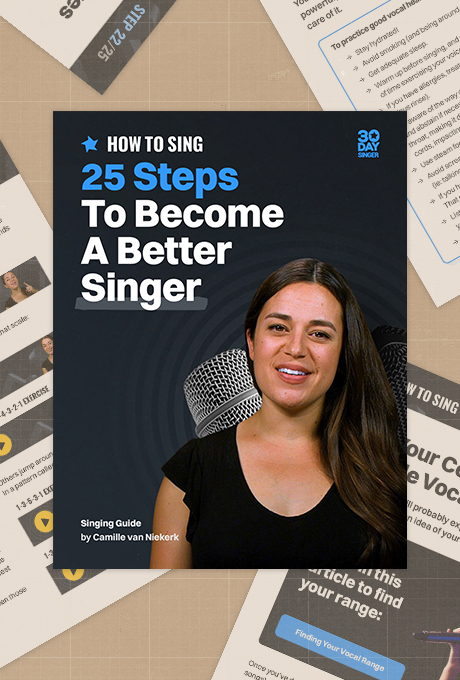Vocal Technique
Welcome to the Vocal Technique section of 30 Day Singer. These lessons focus on developing key singing techniques like vibrato, belting, singing higher or lower, breath control and much more. We offer guidance on how to learn these techniques and perfect them so you can perform with confidence. Some of these techniques are introduced in our beginner courses so if you need more time and focus on a particular area, these lessons come in very handy. You can bounce between these lessons freely or use a set combination of these lessons as part of your daily practice routine to monitor progress.
TUTORIALS
Vowel And Vowel Modification
By Camille van NiekerkWe all want to sing with with more ease, and a clear and beautiful tone. One way to achieve this is through vowel modification. Join Camille in this lesson as she provides an overview on singing vowels and vowel modification.
How To Improve Your Rhythm
By Camille van NiekerkImprove your vocal rhythm in this live lesson. We'll cover: rhythm and beat; tempo; how to count "rests"; and using a metronome in your practice.
Mixed Voice 101
By Camille van NiekerkJoin Camille to learn the holy grail technique, mixed voice! Tune in as she breaks down this topic, and guides you in finding your personal mixed voice.
Vocal Range Extension
By Camille van NiekerkIn this Live Lesson you'll learn how to find your comfortable range, the limits of each register, how to actually sing lower & higher, helpful vowels & syllables for each register and much more!
Diminished and Augmented Chords
By Camille van NiekerkAre you looking for a fun challenge? Then join Camille for a tutorial on diminished and augmented chords! Learning to sing and recognize all kinds of chord qualities will help you sing in tune and train your ears to harmonize!
Notes, Scales & Keys Overview for Beginning Singer
By Camille van NiekerkIn this Live Lesson we'll go over some basics about pitches and how they fit into scales and keys of songs. We'll cover: understanding pitch letter names, scales and keys so you can learn to match pitch and sing in tune.
How To Sing SMOOTH
By Camille van NiekerkLearn how to smooth out your voice in this Live Lesson. We'll cover how to blend registers, singing without a noticeable "crack", and building mix or middle voice.
How To Sing LOUD & Quiet
By Camille van NiekerkIn this Live Lesson we'll cover air pressure and how it impacts your volume, vocal fold compression and what that means for your voice, vowel shapes & their impact on your singing, and resonance strategies for singing loud or quiet without inducing strain.
Vibrato Week 1/2
By Camille van NiekerkWe'll cover: what vibrato is; 4 technical issues that could be preventing your vibrato from ringing (& exercises to help solve those issues); exercises to "kickstart" your vibrato if it's not there, plus much more!
Vibrato Week 2/2
By Camille van NiekerkWe'll cover how to fix issues with vibrato (too fast or slow); vibrato control (singing straight tone and vibrato); vibrato usage in songs, and much more!
Frequently Asked Questions
Some great vocal warmups for singers start with gentle humming or lip trills to relax and engage your vocal cords without straining them. Then, work through some scales to gradually increase your pitch range and get your voice fully warmed up.
For a quick 5 minutes vocal warm up, try some lip trills or gentle humming for a couple of minutes. It’s effective and quickly preps your vocal cords for singing or speaking without overdoing it.
When your voice is sick, keep singing warmups light and gentle—like humming or low, quiet scales. Also, drink lots of warm fluids and rest your voice as much as possible.
Start with some light humming, followed by a few pitch glides (from low to high sounds) to get your voice comfortable. Finish with a few tongue and lip trills to help with articulation.
Two good vocal warm ups are humming and lip trills. These are super effective and easy vocal warm-ups that gently activate your vocal cords without causing strain. Both are great for starting any vocal exercise.
Breathing exercises and resonance drills, like humming and vocal slides, improve the quality and projection of your speaking voice. They help develop control and clarity, making your voice sound more confident.
Hydrate regularly, practice breathing exercises, and do daily warm-ups. Consistency with these habits will help your voice sound smoother and stronger over time.
To strengthen a weak speaking voice, practice deep breathing and speak from your diaphragm to add power. Also, try projection exercises like speaking in front of a mirror to boost confidence and clarity.
Focus on articulation exercises, like tongue twisters, and practice controlling your breath to avoid running out mid-sentence. Over time, these will improve clarity and help you speak with ease.
The four vocal function exercises are sustained phonation (holding a sound steadily), pitch glides (sliding between notes), lip trills, and staccato sounds on different pitches. They work together to strengthen and balance your vocal cords.












